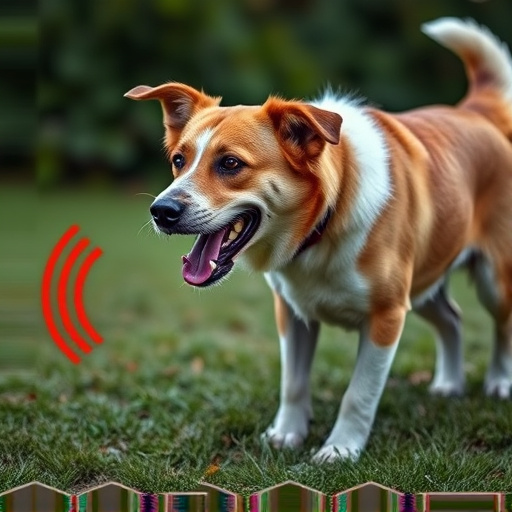The text compares stationary and mobile dog barking repellents, emphasizing their differences and ideal uses. Stationary solutions, like ultrasonic or scent-based deterrents, are localized, cost-effective, but lack flexibility. Mobile systems, such as remote-controlled devices or bark sensors with collars, offer adaptability for dogs that bark in various settings, but are pricier and may require manual management. The best choice depends on your dog's behavior patterns and lifestyle, considering factors like property size and desired control level. For a Stationary Vs Mobile Dog Repellent Comparison, evaluate your needs based on these aspects to select the most suitable solution.
“Unleash a quieter environment with an electronic dog barking prevention system—a modern solution to a common canine concern. This article guides you through the intricate world of these systems, offering a comprehensive comparison between stationary and mobile repellents.
We explore the pros and cons of each approach, helping you navigate the options to find the perfect fit for your situation. From understanding the technology to choosing the right solution, discover how to transform excessive barking into a distant memory with our Stationary Vs Mobile Dog Repellent Comparison.”
- Understanding Dog Barking Prevention Systems
- Stationary vs Mobile Repellents: Pros and Cons
- Choosing the Right Solution for Your Situation
Understanding Dog Barking Prevention Systems
Dog barking prevention systems have evolved significantly, offering both stationary and mobile solutions to address this common canine behavior issue. At their core, these systems aim to deter excessive barking through various methods, each with its own merits. Stationary repellents typically rely on sound or scent-based triggers, emitting ultrasonic sounds or releasing specific odors that dogs find unpleasant when they bark excessively. These devices are usually installed in specific areas like patios or yards, making them ideal for homeowners looking for localized solutions.
In contrast, mobile dog repellent systems offer more flexibility, as they can be easily carried and relocated to different settings. These portable options often incorporate elements of sound, light, or even vibration to capture a dog’s attention and discourage barking. The comparison between stationary and mobile repellents comes down to application and effectiveness; while stationary devices provide consistent protection in fixed spaces, mobile systems are better suited for outdoor activities, travel, or managing bark issues in multiple environments.
Stationary vs Mobile Repellents: Pros and Cons
In the battle against excessive dog barking, the choice between stationary and mobile repellents is an important one for pet owners. Stationary repellents, like ultrasonic devices or scent-based deterrents, are installed in specific areas to create a barrier against barking. Their pros include convenience – they can be easily placed where needed – and cost-effectiveness. However, they lack flexibility; if the dog’s behavior changes or moves to a new area, the stationary device may no longer be effective.
On the other hand, mobile repellents, such as remote-controlled devices or bark sensors paired with collars, offer greater adaptability. They can accompany your dog during walks or be moved to different locations as needed. Mobile options are ideal for dogs that have a wide range or tend to bark in various settings. However, they can be pricier and may require more active management, as you’ll need to operate the device manually or set up the collar accordingly. The choice between these two ultimately depends on your dog’s behavior patterns and your lifestyle.
Choosing the Right Solution for Your Situation
When considering a dog barking prevention electronic system, it’s crucial to weigh the options between stationary and mobile repellents. Stationary systems are ideal for owners looking for a consistent, hands-off approach. These devices usually employ ultrasonic sounds or spray to deter barking, activated by motion sensors that detect when your dog approaches. They’re perfect for specific areas like patios or yard boundaries, offering a targeted solution without requiring constant monitoring.
On the other hand, mobile dog repellents provide flexibility and portability. These systems utilize remote controls or apps to trigger various sounds, vibrations, or even light shows designed to interrupt and calm dogs. Mobile options are excellent for those who want to address barking in multiple locations or during specific times of day. When choosing, consider factors like your dog’s behavior patterns, the size of your property, and whether you prefer a local or remote control approach to manage barking effectively.
When it comes to dog barking prevention, both stationary and mobile repellents offer unique solutions. A Stationary vs Mobile Dog Repellent Comparison reveals that stationary systems are effective for consistent, targeted barking control in specific areas, while mobile devices provide flexibility and are ideal for training and correcting bark issues on the go. Choosing the right solution depends on your dog’s behavior patterns and living environment. By understanding these options, you can effectively manage and prevent unwanted barking, fostering a peaceful environment for both you and your furry companion.
